In this article, you will learn what is fuel line? Its diagram, types, function, material, fitting, and cleaner are explained with Pictures.
If you need a PDF file? Just download it at the end of the article.
What is Fuel Line?
A fuel line is known as a hose or pipe that is used to transfer fuel from one point to another or from a storage tank to a vehicle. The fuel line is usually made of reinforced rubber to prevent breaking and kinking.
Sometimes, it is also made of plastic materials, and although they are located in the vehicle’s undercarriage, and appear to be in a weak position. They are set in places that are exposed to the elements, road conditions, or heat. In addition, it cannot be damaged due to the engine moving.
The Environmental Protection Agency of the USA defines a fuel line as “all types of hoses or tubing made to contain liquid fuel or fuel vapor. This means It shall also include all hoses or tubing for filler necks, for links between dual fuel tanks, and for joining a carbon canister to the fuel tank. It does not have hoses or tubing for carrying crankcase vapor into the intake of the engine or any other hoses or tubing that is open to the atmosphere.”
Read Also: What are the different types of fuel gauges?
Construction of Fuel Line
All parts of the fuel system are connected by fuel and vapor lines and hoses. These permit delivering fuel to the carburetor, returning excess fuel to the tank, and carrying fuel vapor.
Fuel lines should be routed to stay as cool as possible. If any part of the fuel line is accessible to overheating, the gasoline passing through it evaporates more quickly compared to a fuel pump can create suction.
Lower pressure or partial vacuum in the fuel pump also causes fuel to vaporize. This condition produces a vapor lock due to which the fuel pump delivers only vapor to the carburetor. Also, the vapor goes out the bowl vent without the engine receiving any gasoline.
Working of Fuel Lines
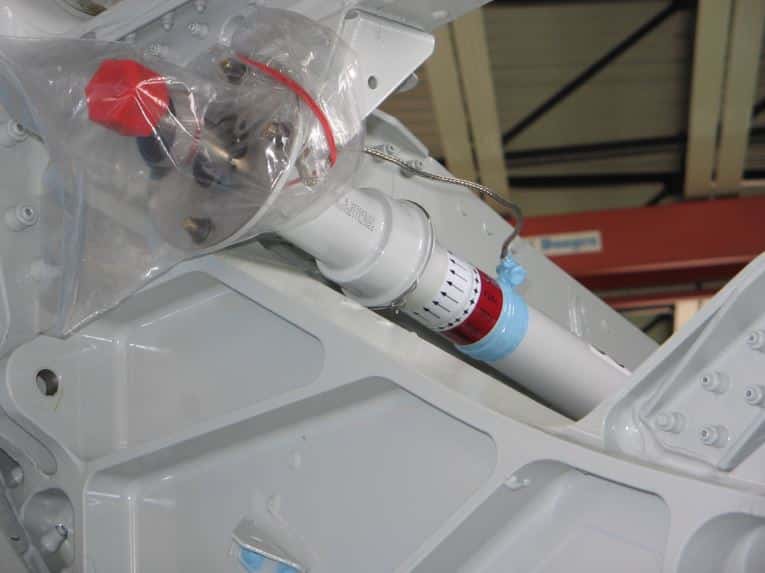
The vapor-return line normally runs from the fuel pump or the fuel filter to the fuel tank. This vapor-return line is connected to a special outlet in the fuel pump. Any vapor that forms in the fuel pump returns to the fuel tank through this line.
The vapor-return line also allows excess fuel being pumped by the fuel pump to return to the tank. This excess fuel, due to continuous circulation, helps keep the fuel pump cool.
Some vapor-return lines have an in-line check valve, which prevents fuel from feeding back to the carburetor from the fuel tank through the vapor-return line. In normal operation, the pressure of vapor from the fuel pump unseats the check ball and allows the fuel vapor to flow to the fuel tank.
If, however, fuel tries to feedback to the carburetor, the pressure of the fuel forces the check ball to sit, blocking the line. In some fuel systems, a vapor separator is connected between the fuel pump and the carburetor.
It also has a separator that consists of a sealed can, a filter screen, an inlet and outlet fitting, and a metering orifice, or outlet connecting to the fuel tank.
The bubbles of vapor, which reach the separator along with fuel, rise to the top of the vapor separator. The vapor is then forced by fuel pump pressure to pass through the outlet pipe to the fuel tank where it condenses into liquid.
Read Also: Why Are Spark Plugs So Important to Your Engine?
Types of Fuel Lines
- Rigid Lines
- Fixible Lines
#1 Rigid Lines
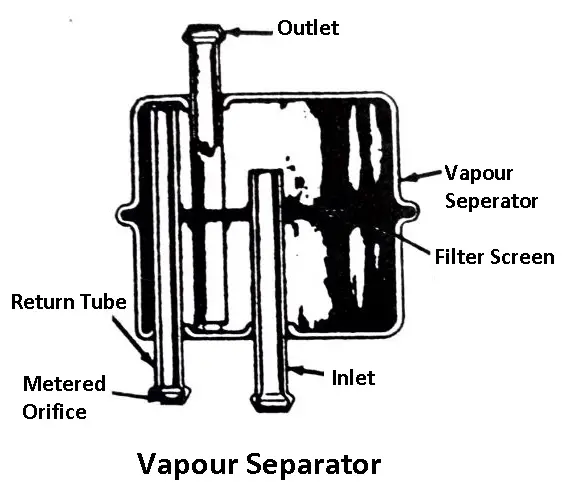
Most of the fuel lines are attached to the body, frame, or engine are of seamless steel tubing. Steel springs have also wound the tubing at certain points to protect against damage. Whenever the fuel line is replaced, only steel tubing should be used.
Copper and aluminum tubing should not be substituted for steel tubing. These materials cannot handle normal vehicle vibrations and also react chemically with gasoline.
In some vehicles, rigid fuel lines are secured along with the frame from the tank to a point close to the fuel pump. The gap between frame and pump is then bridged by a short flexible hose, which absorbs engine vibration. In other vehicles, a rigid line is directly run from the tank to the pump.
#2 Flexible Lines
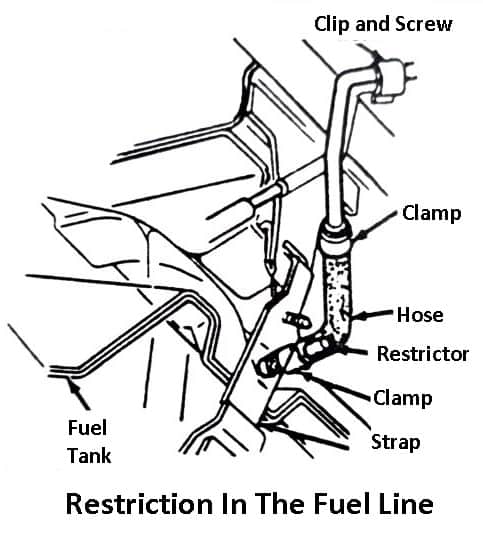
Synthetic hoses are used in most fuel systems where flexibility is needed. Connections between steel fuel lines and other components of the system are often made with short line sections.
The inside diameter of the fuel delivery hose is generally larger (8 to 10 mm) and the fuel return hose is smaller (6 mm). Materials of vapor lines must be capable of resisting attack by fuel vapors.
A metal or plastic restrictor is mostly used in vent lines to control the rate of vapor flow. These are located either at the end of the vent pipe or in the vapor-vent hose itself. When used in the hose instead of the vent pipe, the restrictor is required to be removed from the old hose and installed in the new one whenever hose replacement is carried out.
Read Also: What is the function of a piston pin in an engine?
Fuel Line Materials
Commonly the fuel line hose is made of a few materials that are mentioned below:
- Steel fuel line hose
- Rubber fuel line hose
- Copper fuel line hose
- Plastic fuel line hose
#1 Steel Fuel Line Hose
Many front-wheel-drive and rare-wheel-drive vehicles with fuel tanks have rigid fuel pipes at the rare that run along the length of the chassis from the tank to the engine bay. These pipes are cheap and strong but can cause fuel leaks.
#2 Rubber
While some vehicles have a rubber fuel hose connecting the fuel pipe on the chassis to the fuel pump or carburetor on the engine. Rubber hoses are flexible and can be cut to length as needed, but they wear out over time and can rub if not secured properly.
#3 Copper
In older models, the fuel line hose is equipped with copper material. The advantage of using a copper hose is that they are easy to fit and repair, but it is bulky and expensive compared to other materials.
#4 Plastic
Modern types of vehicles typically employ fuel lines that are made of plastic, usually nylon. Plastic fuel lines do not rust and are lighter than metal tubing, but they melt at low temperatures and cannot be easily repaired.
Fuel Line Mounting and Fitting
Mounting
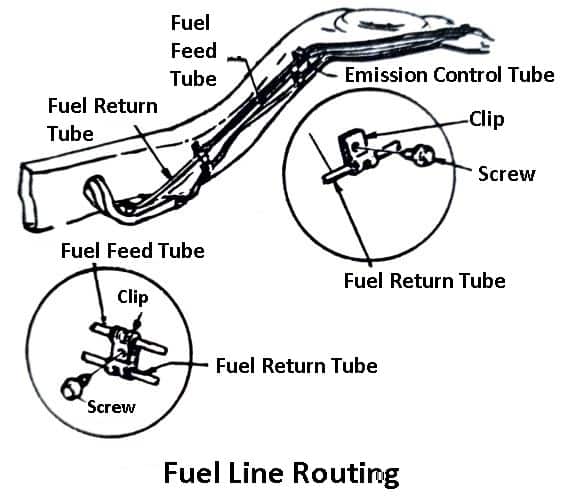
Fuel supply lines from the tank to the carburetor are rounded to follow the frame along the underbody of the car.
Vapor and the return lines are usually on the frame rail opposite to the supply line, but may also be routed with the fuel supply lines. All rigid are fastened to the frame rail or under-body by screws and clamps or clips. Typically, the clamps are used for fastening the hoses to steel fuel lines.
Fitting
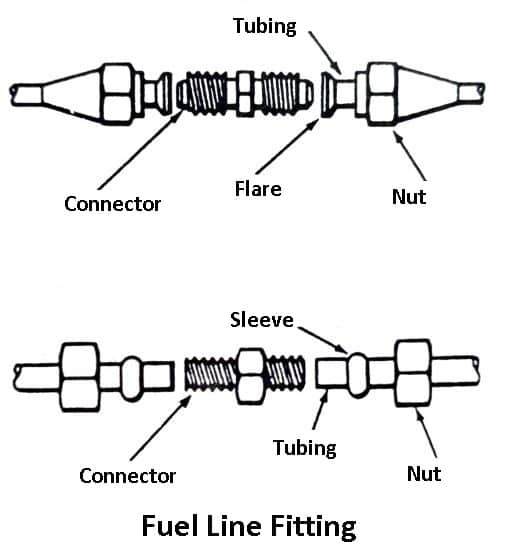
The brass fitting is used in fuel lines is either of the flared type or the compression type. Flared fittings are more common. During the replacement of tubing, a double flare should be used to prevent the flare from cracking and to ensure a good seal.
Compression fitting has a separate sleeve, a tapered sleeve, or a half sleeve nut to make a good connection. Various types of clamps are used to secure fuel hoses.
Fuel Line Cleaner
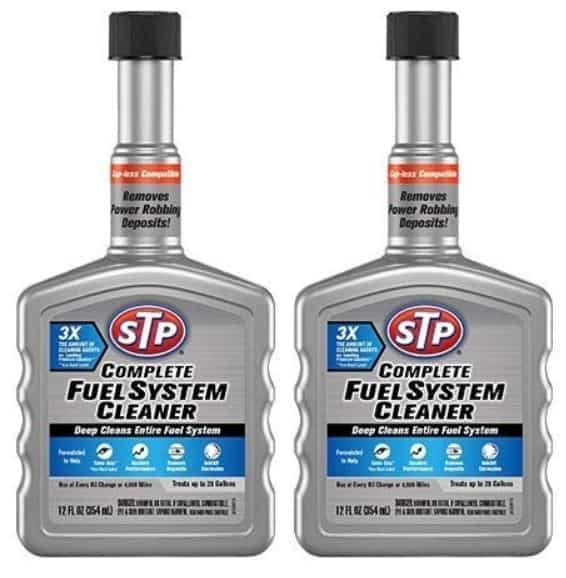
In every type of car, the fuel system plays the most important role in providing fuel to the engine. A car cannot run without fuel, therefore, your car’s fuel system must always be kept in excellent condition to keep it running efficiently.
A fuel system cleaner is a product that helps to clean the entire fuel system from dirty particles that can directly affect car performance and engine health. Generally, no one wants that the engine to be damaged or disturbed by intermittent fuel supply or stopping at a critical moment.
Without a fuel system cleaner, your car could experience some symptoms. Carbon build-up is a symptom caused by a bad fuel line but it takes time for it to go worse. If it happens, it can completely destroy the system. Therefore, it is good to use a fuel line cleaner in the fuel system so that it can prevent your fuel system from accumulating carbon pollutants.
Wrap Up
Fuel lines are a safety component in every car, so they must meet safety regulations. When selecting reliable fuel lines, the driver should take care of the few considerations and carry out minimal verification at the component level.
The main points to be considered when choosing a fuel line are material, clearance study, engine roll movement, connector/end fitting selection.
So for now, I hope I’ve covered everything you were looking for about “Fuel Line”. If you still have any doubts or questions regarding this topic, you can contact us or ask in the comments. If you liked it, then share this with your friends.
Want free PDFs direct to your inbox? Then subscribe to our newsletter.
Download PDF of this article:
You might like to read more in our blog:
Thanks for the knowledge
You’re welcome.
Thank so much very nice many learning Ang additional knowledge aguin
You’re most welcome.
Good infomation,easy to be understood.
Thanks for reading.